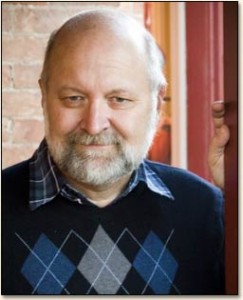Okay, I confess. I’ve always wanted to be an evil minion. I’m nowhere close to clever enough to be an evil mastermind, but I could totally be an evil mastermind’s go-to girl.
In all seriousness, bad guys are my favorite. Good guys, for the most part, tend to bore me, and I’m the first to admit that my fiction has few heroes. Even my protagonists have their roots in the dark side.
First, let’s be clear. When I talk about bad guys and villains here, I’m not necessarily talking about a story’s antagonist. Though they often are cast as characters whose goals are in direct opposition to the protagonist of the tale, a good villain should be able to take any role. For example, when we’re introduced to Hannibal Lecter, one of the best bad guys around, in Silence of the Lambs, he takes the role of the mentor, helping the protagonist, Clarice, find the real antagonist, Buffalo Bill. In comics and graphic novels, the hero’s arch-nemesis often starts as a friend, and villains often switch from good to evil and back again as the story dictates.
So, what makes a great bad guy? Here’s four traits that I think really get to the root of that very question.
First, and probably most important, a great bad guy never believes they’re bad. As the actor Willem Defoe famously said, everyone believes they are the hero of their own story. Your villain is no different. In fact, while your actual hero might struggle with their identity, the best villains have no doubts. To them, they have only the purest motivations. Everything they do has an extremely good and rational reason.
A great litmus test for your bad guy is to have them take part in a “good vs evil” scene, where both sides lay out their case. The best ones should almost convince the reader to join the evil side of the argument.
In short, a great bad guy can rationalize like nobody’s business.
This brings us to trait number two, which I think is intrinsic to every morally questionable character. They either have no concept of or don’t care about consequence. Unintended outcomes are usually a secondary factor, if a factor at all. To these characters the ends always justifies the means. This capacity is, I believe, one of the main reasons we love villains. They do what we wouldn’t dare. While a hero struggles to find a way around bad consequences and is emotionally affected by having to choose between necessary evils, a good bad guy focuses on the goal and doesn’t let anything get in the way.
We see this all the time with villains who want to save the world, even when it means doing something horrendous. The first season of the TV show Heroes had a group who wanted to blow up New York, sacrificing millions for the sake of the rest of the world. Watchmen has a villain who kills billions for the same reason — and the ploy actually works.
The third main trait is unpredictability. A baddie’s untrustworthy nature is a huge draw because we always want to know what they’ll do next. They always keep us guessing. We see this in various forms, my favorite being when they’re acting as what Tracy Hickman calls the contagonist. A contagonist is the conniver, the untrustworthy ally that has a goal that might run parallel with the hero, but who in the end, isn’t out for the same things. They have their own agenda that can, at any moment, complicate the story.
We see Hannibal take this role in the novel Red Dragon, where he helps the hero just as he did with Clarice to find a killer, but in the end, his real agenda is to get revenge on said hero for putting him in prison. He plays along, all the while working his secret agenda to bring about a goal that has nothing at all to do with the main plot of the story.
In that vein, always be careful that you don’t reveal too much about your bad guy. When the reader completely understands a character, they lose their unpredictability. While we may be hooked with tantalizing hints into why a bad guy went bad, the best ones always remain something of an enigma that can do anything at any time. A fantastic example of this is the Joker from Christopher Nolan’s Dark Knight, who never does what’s expected because his end game is never fully understood. We get a bunch of theories, but no definite answers. At the same time, our friend Hannibal suffers from over sharing. Over a succession of books, Thomas Harris tells us everything about the man from his childhood onward. For many readers, this ruined the innate menace of the character.
Though, while you’re keeping the reader in the dark for the most part, remember that every big bad is also a person, never completely evil, just as a hero is never completely good. This brings us to trait number four — every great bad guy has a spark of light in that dark little soul of theirs. Something should always give us hope that this character can find redemption, no matter how bad they might behave. I think this last bit is why the best bad guys can bounce around the story in whatever role they like. They might be a protagonist serial killer who only kills criminals the justice system can’t catch, a thief sidekick who’ll do anything to start over clean, or an antagonistic Norse trickster god who just wants his daddy’s approval, bad guys should have something the reader can identify with. A little sugar with their spice always makes their mayhem a little more interesting.
So, got any other traits that can turn a so-so bad guy into a great one?




